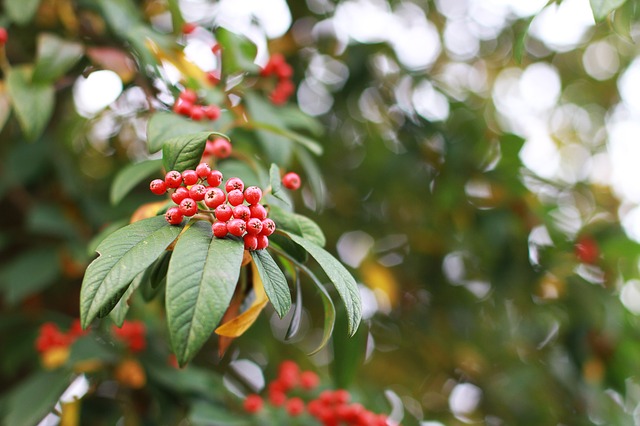
The red elder is a large bush or a small tree that reaches 2-5 m in height. Strongly branched. The plant is evergreen and easily confused with its relative, the black elder . If there is no in-depth knowledge of this species, then it can be distinguished only during the berry season. Bark grey-brown. The leaves are pointed, toothed, elongated, dark emerald green in color. Arranged oppositely, arranged in odd tufts. But sometimes there are bushes with red leaves. Their leaves have an increased concentration of pigment - anthocyanin. The flowers are small, yellow-green, arranged in a cone-shaped spike. The fruit is a red drupe located in a dense raceme. The plant blooms in May and the fruits ripen in August. But you can find fruits on the tree until late autumn.
The plant is widely distributed throughout the territory of Latvia and you can meet it both in different vegetation and already in the wild. The plant can be recognized relatively easily even during flowering, it has a very unpleasant and sharp smell. The favorite growing places of the red elder tree are fields, ditches, forest edges.
From a chemical point of view, the plant has been studied extremely little, because it is not considered with a perspective in pharmacy, and accordingly there is no money for research. However, although there is a prevailing opinion that the red elder is toxic and cannot be used in food. It has gained its application both in cooking and in folk medicine. As much as you have to know how to properly prepare the usable parts of this plant - usually they are fruits. Berries become safe after proper heat treatment. Eating fresh can result in very serious poisoning. The plant contains substances that turn into hydrocyanic acid in our body.
Harvest only ripe fruits, because unripe ones pose an increased risk to human health. Harvesting is usually done in mid or late August. Collect all the berries and dry them in a shaded place with good ventilation. Of course, it can also be dried in forced dryers, not exceeding 45C.
Two representatives of this species can often be found in nature - the black elder and the red elder. But what are the main differences between these two bushes/trees. Of course, it is the color of the fruit, but we do not always meet this tree during the fruiting season. It is popular to collect the flowers of the black elder tree, so here you should pay attention to the smell - the red one will be sharp and unpleasant, the black one will smell pleasant, gently like almonds. Visually, the black elder tree differs minimally from the red elder tree, both flowers and leaves are similar to them. As much as the leaves of the red elder tree are brighter (if it is possible to compare both at the same time).
Although red elder is not particularly popular in folk medicine, due to its toxicity. But it also has quite a lot of valuable elements. It contains vitamins E, group B and A, organic acids, tannins and tannins, paraffinic compounds, natural sugars, esters and resins, amino acids, calcium, iron, potassium and selenium, copper, sodium, zinc and phosphorus.
Medicinal significance
By using the plant carefully, you can also get quite a lot of valuable elements for your health. In folk medicine, diseases of the lung organs, kidney and liver diseases, joint diseases and inflammations (arthritis, radiculitis, rheumatism), skin inflammations and diseases (psoriasis and eczema), oral cavity diseases are treated with the fruits of the red elder tree. Some folk herbalists also use this plant to treat onco-diseases and relieve climax. Uncooked red elderberry fruits are often used in treatment, and here you have to be extremely careful with the dosage and not to exceed the course of use.
Plant preparations are used not only orally, for the treatment of various diseases. This plant is also widely used in beauty care. In our version, home cosmetics. Flowers of the plant are used more often, leaves and fruit pulp less often. Herbal remedies help get rid of acne, skin inflammation, can regulate skin oiliness and increase its tone.
It is good to rinse the hair with a decoction of the plant, especially in cases where the hair falls out.
An interesting observation - the berries of the red elder tree can be used to clean the skin perfectly, to be used instead of soap. Usually, for very dirty hands, a couple of berries are enough, which are crushed in the palms so that the juice comes out of them.